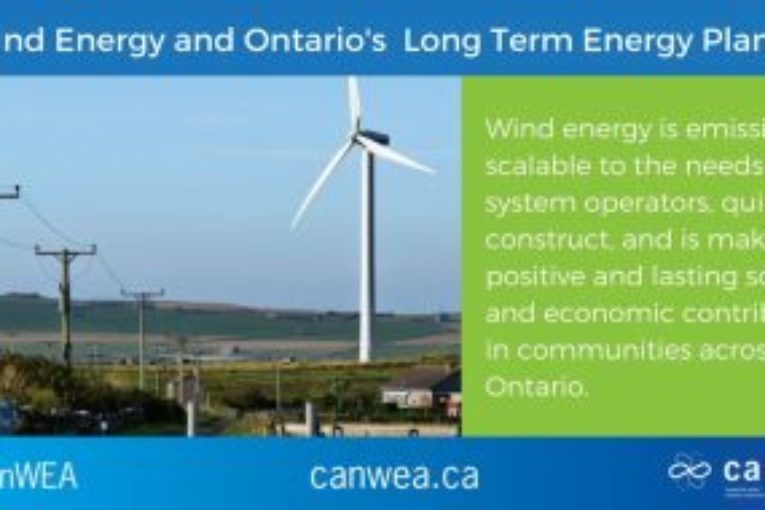
Following the October 2017 release of Ontario’s updated Long-Term Energy Plan (LTEP), Delivering Fairness and Choice, the focus is now on implementation. Canada’s wind energy industry is contributing to this process.
A key focus of the LTEP is to transform “Ontario’s wholesale electricity markets through market renewal”, which is to “be aligned with the objectives of Ontario’s Climate Change Action Plan” and “designed to reduce ratepayer costs and GHG [greenhouse gas] emissions.” The updated LTEP will unfold against a future in which Ontario faces an electricity supply gap as nuclear units are retired, others are taken off line for refurbishment, natural gas is constrained as the province focuses on achieving its climate change goals, carbon emissions are priced increasingly higher, and electricity is forecast to fulfil more of our energy needs.
As part of its market renewal initiative, the Independent Electricity System Operator (IESO) wants to move toward a system that “will deliver a more efficient, stable marketplace with competitive and transparent mechanisms that meet system and participant needs at lowest cost.” Non-emitting resources have an important role to play, leading the IESO to establish the Non-Emitting Resource Sub-Committee (NER SC). The NER SC has a goal of ensuring “the unique characteristics of non-emitting resources are appropriately reflected in the Market Renewal design.”
The Canadian Wind Energy Association’s (CanWEA) goal is to work within the NER SC to find the middle ground between the long-term power purchase agreements of the past – responsible for the development of a new Ontario industry and rapidly-falling costs over time – and new flexible, cost-effective mechanisms for securing non-emitting resources.
This is not just critical for Ontario’s home-grown wind energy industry; it is key to Ontario securing the lowest-possible electricity supply prices in the future while continuing to reduce its carbon emissions.
We now live in a world where renewable energy is growing faster than any other energy source, and where “renewables [will] capture two-thirds of global investment in power plants to 2040 as they become, for many countries, the least-cost source of new generation”, according to a recent International Energy Agency study. Wind energy will receive much of this investment. Since 2009, the unsubsidized levelized cost of energy (LCOE) for onshore utility-scale wind energy decreased by 67 per cent, according to a November 2017 report by U.S. investment firm Lazard. The levelized cost of wind is now lower than for combined cycle gas, nuclear and coal.
In Ontario, a 2014 procurement resulted in a contract price of 6.45 cents per kilowatt hour; in Quebec, the lowest price to date is 6.3 cents; and in Alberta, 600 megawatts of wind development was priced at a weighted average new low of 3.7 cents per kilowatt hour in contracts signed in December 2017. Wind energy prices are going down rapidly in Canada as they are around the world – a claim that more traditional energy sources cannot make.
Add in the facts that wind is emission free, scalable to the needs of system operators, quick to construct, and beneficial to local economies, and you can see why strongly advocating that wind energy must continue to be a major feature in Ontario’s energy landscape going forward makes great sense if Ontario is to achieve the goals of its updated LTEP.
Want to learn more? Check out these blogs about wind energy in Ontario.
Ontario Regional Director at the Canadian Wind Energy Association
You can read more of the news on source



